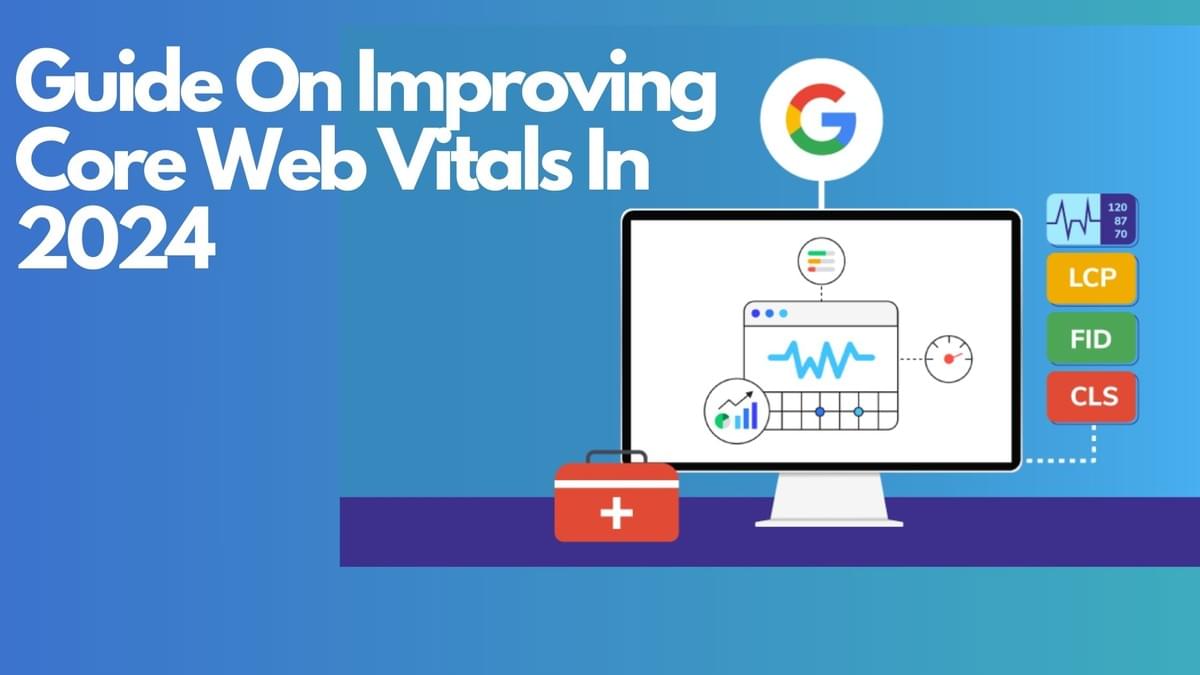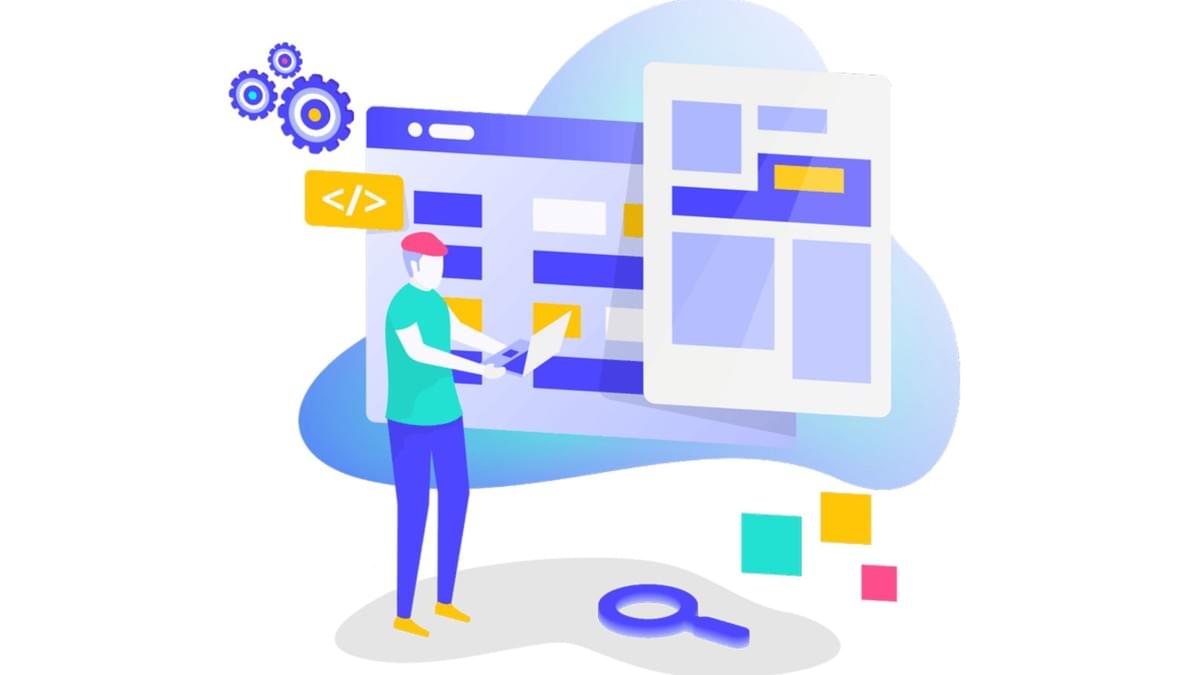
In the ever-evolving landscape of website design, user experience stands at the forefront of success. As we navigate the digital realm in 2024, Core Web Vitals have emerged as a crucial metric, directly impacting how users perceive and interact with websites. In this extensive guide, we will delve into the significance of Core Web Vitals, explore the metrics involved, and provide actionable tips to enhance these vital elements for an optimal user experience.
I. Understanding Core Web Vitals
A. The Essence of User-Centric Metrics
Introduction to Core Web Vitals:
- Define Core Web Vitals as essential metrics that gauge user experience on websites.
- Discuss the three key metrics: Largest Contentful Paint (LCP), First Input Delay (FID), and Cumulative Layout Shift (CLS).
Google's Page Experience Update:
- Explore the role of Core Web Vitals in Google's Page Experience update.
- Discuss how these metrics influence search engine rankings and overall website performance.
II. Key Core Web Vitals Metrics Explained
A. Largest Contentful Paint (LCP)
Measuring Loading Performance:
- Define LCP as the time it takes for the largest content element to become visible to users.
- Discuss the significance of fast-loading content for a positive user experience.
Factors Influencing LCP:
- Explore the factors that impact LCP, such as server response time, resource load times, and rendering speed.
- Provide actionable tips to optimize LCP, including image optimization and efficient coding practices.
SFWPExperts, a leading website design company, is dedicated to optimizing user experiences by prioritizing Core Web Vitals. With a focus on metrics such as Largest Contentful Paint (LCP), First Input Delay (FID), and Cumulative Layout Shift (CLS), SFWPExperts ensures websites excel in performance and meet the evolving standards of user-centric design.
B. First Input Delay (FID)
Evaluating Interactivity:
- Define FID as the time between a user's first interaction and the browser's response.
- Discuss the importance of responsive interactivity for user engagement.
Factors Influencing FID:
- Explore the factors affecting FID, including JavaScript execution time and browser rendering capabilities.
- Provide strategies to reduce FID, such as code splitting and optimizing JavaScript execution.
C. Cumulative Layout Shift (CLS)
Assessing Visual Stability:
- Define CLS as the measure of unexpected layout shifts during page loading.
- Discuss how visual stability contributes to a seamless and frustration-free user experience.
Factors Influencing CLS:
- Explore the factors that contribute to CLS, such as dynamically loaded content and asynchronous scripts.
- Provide guidelines for minimizing CLS, including proper image and ad loading practices.
III. Website Design Tips for Improving Core Web Vitals

A. Optimize Images and Multimedia
Image Compression Techniques:
- Discuss the importance of compressing images to reduce file sizes and improve loading times.
- Provide tools and techniques for optimizing images without compromising quality.
Lazy Loading Implementation:
- Explore the benefits of lazy loading for multimedia elements, ensuring they load only when needed.
- Discuss how lazy loading contributes to improved LCP and overall page performance.
B. Prioritize Critical CSS and Code Splitting
Critical CSS Definition:
- Define critical CSS as the minimal set of styles required to render the initial view of the webpage.
- Discuss how prioritizing critical CSS reduces render-blocking and improves LCP.
Code Splitting Strategies:
- Explore code splitting techniques to divide large JavaScript files into smaller, more manageable chunks.
- Discuss how code splitting contributes to faster FID and overall interactivity.
C. Efficiently Manage Third-Party Scripts
Impact of Third-Party Scripts:
- Discuss the potential impact of third-party scripts on website performance and Core Web Vitals.
- Explore strategies for managing and optimizing third-party scripts to minimize their impact.
Asynchronous Loading:
- Highlight the benefits of asynchronous loading for third-party scripts to prevent blocking of critical resources.
- Provide insights into implementing asynchronous loading for improved FID.
D. Implement Browser Caching and Content Delivery Networks (CDNs)
Browser Caching Overview:
- Define browser caching and its role in storing website resources on users' devices.
- Discuss how browser caching reduces server requests and enhances overall page speed.
Utilizing Content Delivery Networks:
- Explore the benefits of Content Delivery Networks (CDNs) in distributing website content globally.
- Discuss how CDNs contribute to reduced server response times and improved LCP.
E. Prioritize Mobile Responsiveness
Mobile-First Design Principles:
- Discuss the importance of designing websites with a mobile-first approach.
- Explore responsive design techniques for ensuring optimal user experiences across various devices.
Testing and Optimization for Mobile:
- Highlight the significance of testing websites on mobile devices to identify and resolve performance issues.
- Discuss tools for mobile optimization and testing Core Web Vitals on mobile platforms.
IV. Regular Monitoring and Analysis
A. Leveraging Web Vitals Tools
Google's PageSpeed Insights:
- Explore the insights provided by Google's PageSpeed Insights tool for assessing Core Web Vitals.
- Discuss how to interpret and prioritize recommendations for improvement.
Search Console Web Vitals Report:
- Discuss the Web Vitals report in Google Search Console, providing an overview of website performance.
- Explore how the report helps identify specific pages that require attention.
B. Continuous Improvement Strategies
Periodic Audits and Assessments:
- Emphasize the need for regular audits and assessments of Core Web Vitals.
- Discuss how ongoing monitoring ensures sustained performance improvements.
User Feedback Integration:
- Explore the importance of user feedback in identifying performance issues.
- Discuss strategies for integrating user feedback into the improvement process.
V. Future Trends in Core Web Vitals

A. Evolving Metrics and Standards
Google's Algorithm Updates:
- Discuss the potential for future updates to Google's algorithm, influencing Core Web Vitals metrics.
- Explore how staying informed about industry standards is crucial for sustained performance.
Emerging Technologies:
- Highlight the impact of emerging technologies, such as Progressive Web Apps (PWAs) and WebAssembly, on website performance.
- Discuss how advancements in web technologies may influence Core Web Vitals.
B. User Expectations and Experience
Dynamic User Expectations:
- Explore how evolving user expectations influence the definition of a positive user experience.
- Discuss the importance of aligning website performance with user expectations.
Adaptation to Technological Changes:
- Highlight the necessity of adapting websites to technological changes for continued relevance.
- Discuss strategies for future-proofing websites against evolving user preferences.
Conclusion
As we navigate the dynamic landscape of website design in 2024, prioritizing Core Web Vitals is no longer optional but imperative for ensuring a positive user experience. By understanding and optimizing key metrics such as Largest Contentful Paint (LCP), First Input Delay (FID), and Cumulative Layout Shift (CLS), websites can stand out in the competitive digital space. Implementing website design tips and leveraging monitoring tools are integral to continuous improvement, ensuring that Core Web Vitals remain optimized for enhanced user satisfaction. Embrace the evolving standards, prioritize user experience, and elevate your website's performance to new heights in the ever-evolving digital era.
Read More Articles:
